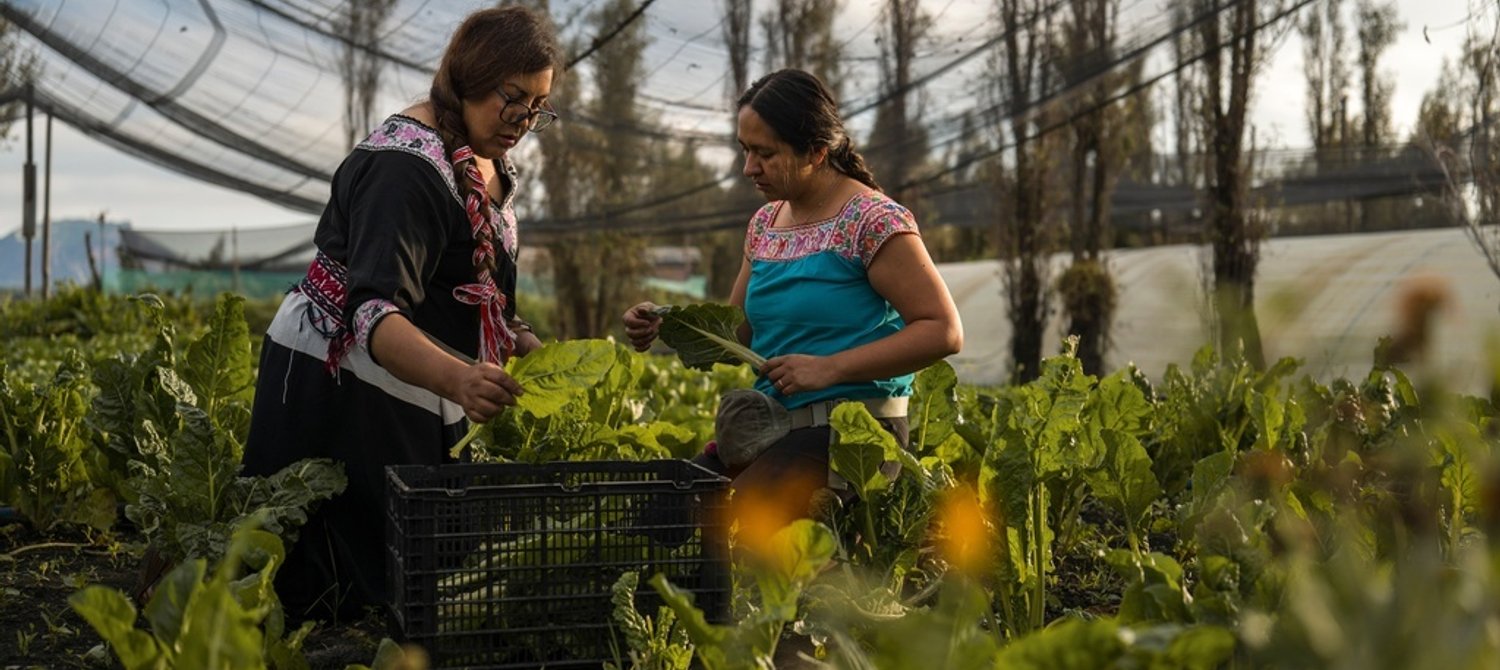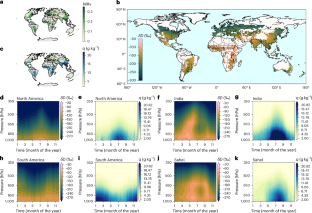Report on Municipal Grocery Initiatives and Sustainable Development Goals
Introduction: Addressing Urban Food Accessibility
A trend is emerging in major U.S. cities, including Boston and New York, to consider the establishment of government-owned grocery stores. This initiative aims to address gaps in food access and affordability, directly aligning with several key United Nations Sustainable Development Goals (SDGs). The central objective is to create equitable access to nutritious food, thereby fostering healthier and more sustainable urban communities.
Initiatives in Boston and New York: Targeting SDG 2 and SDG 10
Officials in Boston are formally studying the feasibility of municipal markets, following a recent city council hearing. This exploration mirrors policy discussions in New York City, where the concept has been championed as a method to combat food insecurity. These proposals are fundamentally aimed at achieving:
- SDG 2 (Zero Hunger): By ensuring all residents, particularly those in underserved neighborhoods often referred to as “food deserts,” have reliable access to sufficient, safe, and nutritious food.
- SDG 10 (Reduced Inequalities): By closing the gap in access to essential services between different socioeconomic groups within the urban landscape.
The primary proponents, including Boston Councilors Ruthzee Louijeune and Liz Breadon, and New York mayoral candidate Zohran Mamdani, advocate for these stores as a direct government intervention to guarantee food as a public good.
Case Study: Atlanta’s Azalea Fresh Market and SDG 3 & SDG 11
The city of Atlanta has moved from concept to implementation with its first city-run grocery store, Azalea Fresh Market, which opened on August 28. The initial performance of this market provides valuable data on the potential impacts of such a model on community well-being and sustainability.
- Community Engagement: The store served over 20,000 customers in its initial phase, indicating a strong need within the community.
- Promotion of Healthy Diets (SDG 3): Fresh produce constituted 11.6% of total sales in the first month, surpassing the national average of 10% and highlighting a demand for healthier food options.
- Building Sustainable Communities (SDG 11): By providing essential services in a previously underserved area, the initiative contributes to making the city more inclusive and resilient.
Atlanta Mayor Andre Dickens stated the market’s success demonstrates that targeted municipal action can deliver tangible solutions that improve residents’ lives.
Economic Debate and Implications for SDG 8 (Decent Work and Economic Growth)
The concept of city-run grocery stores has prompted significant debate regarding its economic sustainability and impact on the private sector, a core concern of SDG 8. Critics from institutions such as the Cato Institute, the Manhattan Institute, and the Heritage Foundation raise several points:
- Market Distortion: Government-run stores, potentially operating with taxpayer subsidies, could create unfair competition for private supermarkets, which already function on very low profit margins. This could hinder private sector growth.
- Economic Inefficiency: Concerns have been raised that public grocers may lack the specialized knowledge and profit-driven efficiency of private enterprises, potentially leading to poor management, shortages, and long-term financial unsustainability. A failed government-backed store in Kansas City is cited as a cautionary example.
- Alternative Solutions: Opponents suggest that a more effective approach to improving food access in line with SDG 8 would be to reduce taxes and regulatory burdens for all grocers, thereby encouraging free-market entrepreneurs to serve these communities.
Conclusion: A Policy Approach to Achieving SDG 1 (No Poverty)
The movement toward municipal grocery stores represents a direct policy effort to alleviate the pressures of food costs on low-income households, contributing to the overarching goal of SDG 1 (No Poverty). By providing affordable food, these initiatives aim to reduce the financial burden on vulnerable families. However, the debate continues over whether direct government intervention or the support of community-based organizations and a deregulated private market is the more efficient and sustainable path toward achieving comprehensive food security and eliminating poverty in urban centers.
Analysis of Sustainable Development Goals in the Article
1. Which SDGs are addressed or connected to the issues highlighted in the article?
The article discusses issues related to food security, urban inequality, and poverty, which directly connect to several Sustainable Development Goals (SDGs). The primary goals addressed are:
- SDG 2: Zero Hunger: The central theme of the article is the effort by cities like Boston and Atlanta to “make fresh, affordable food more accessible” and “close gaps in food access.” This directly aligns with the goal of ending hunger and ensuring everyone has access to nutritious food.
- SDG 10: Reduced Inequalities: The initiatives specifically target neighborhoods that are “long underserved by grocers.” This focus on providing essential services to marginalized or neglected communities is a direct attempt to reduce inequalities within cities.
- SDG 11: Sustainable Cities and Communities: The discussion revolves around municipal actions (city-run grocery stores) to improve the quality of life for urban residents. This relates to making cities more inclusive and ensuring access to basic services for all inhabitants.
- SDG 1: No Poverty: The emphasis on “affordable food” and combating “rising food prices” connects to poverty reduction. High food costs disproportionately affect low-income families, and providing more affordable options can alleviate financial strain.
2. What specific targets under those SDGs can be identified based on the article’s content?
Based on the article’s focus, the following specific SDG targets can be identified:
-
Target 2.1: By 2030, end hunger and ensure access by all people, in particular the poor and people in vulnerable situations, including infants, to safe, nutritious and sufficient food all year round.
- Explanation: The article’s main subject is the creation of municipal grocery stores to provide “fresh, affordable food” in areas with limited access. The success of the Atlanta store is highlighted by its sales of fresh produce, which points to the provision of “nutritious” food to a community “long underserved by grocers.”
-
Target 10.2: By 2030, empower and promote the social, economic and political inclusion of all, irrespective of age, sex, disability, race, ethnicity, origin, religion or economic or other status.
- Explanation: The city-led initiatives are designed to correct a market failure where private grocers have not served certain neighborhoods. By establishing a presence in these areas, the city is promoting economic inclusion and ensuring residents have the same access to essential goods as those in other parts of the city.
-
Target 11.1: By 2030, ensure access for all to adequate, safe and affordable housing and basic services and upgrade slums.
- Explanation: Access to a grocery store that provides fresh and affordable food is a fundamental “basic service.” The article describes how cities are stepping in to provide this service directly, thereby making the urban environment more sustainable and equitable for all residents.
3. Are there any indicators mentioned or implied in the article that can be used to measure progress towards the identified targets?
Yes, the article mentions several direct and implied indicators that can be used to measure the success and impact of these initiatives:
- Number of customers served in underserved areas: The article explicitly states that Atlanta’s “Azalea Fresh Market has served more than 20,000 customers since it opened its doors on Aug. 28.” This is a direct quantitative indicator of the program’s reach and the community’s utilization of the new service.
- Consumption of nutritious food: The article provides a specific metric for the Atlanta store: “fresh produce made up 11.6% of total sales, exceeding the national average of 10%.” This indicator measures progress towards providing and encouraging the consumption of “healthier food options,” directly relevant to Target 2.1.
- Number of municipal stores established in food deserts: The article discusses Atlanta opening its “first city-run grocery store” and Boston “weighing whether the city should open government-owned grocery stores.” The number of such stores opened is a clear indicator of the scale and commitment of the municipal effort to close gaps in food access.
- Affordability of food: While no specific price data is given, the entire premise is to provide “affordable food” and combat “rising food prices.” An implied indicator would be the price of a standard basket of goods at the city-run store compared to other local options, which would measure the initiative’s success in reducing the financial burden on residents.
4. Summary Table of SDGs, Targets, and Indicators
| SDGs | Targets | Indicators Identified in the Article |
|---|---|---|
| SDG 2: Zero Hunger | 2.1: Ensure access for all people to safe, nutritious and sufficient food all year round. |
|
| SDG 10: Reduced Inequalities | 10.2: Empower and promote the social and economic inclusion of all. |
|
| SDG 11: Sustainable Cities and Communities | 11.1: Ensure access for all to adequate, safe and affordable basic services. |
|
Source: foxnews.com







